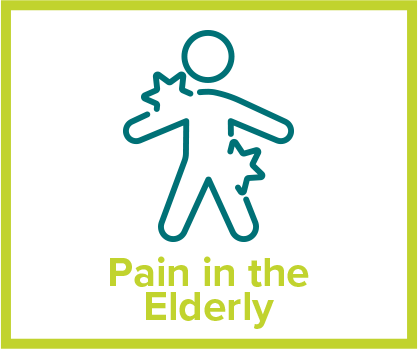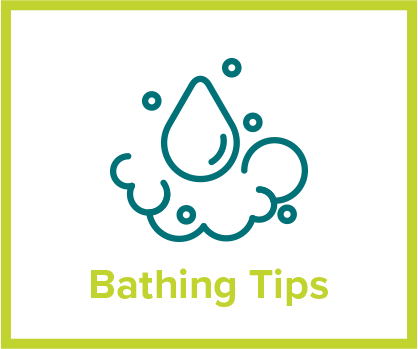By arhospice on September 12th, 2022
Urinary tract infections are the second most common type of infection in the body, accounting for 8.1 million visits to healthcare providers each year. Infection of the urinary bladder, also called cystitis, is what most people think of when they say “UTI.”
In healthy adults, a UTI is fairly easy to detect. The person experiences pain and possibly more frequent urination, and hopefully goes to the doctor to get tested for an infection. In older adults, however, detecting UTIs can be more difficult. Sometimes mental changes or confusion are the only signs that a UTI may be developing. When you add dementia into the mix, those signs can easily get missed.
While anyone can get a urinary tract infection, detecting the signs and symptoms of a UTI in older adults who have dementia or Alzheimer’s can be especially challenging. Symptoms, such as agitation and confusion, may be passed off as just part of the dementia. However, UTIs can cause distressing behavior in this population, too. These changes, referred to as delirium, can develop in as little as one to two days. Symptoms of delirium can range from agitation and restlessness to hallucinations or delusions. It’s important to be able to detect subtle changes and report them right away to the person’s healthcare provider.
UTIs are preventable and treatable – but they can be dangerous if left untreated.
Risk Factors
- Gender – more common in women
- Diabetes – poor blood blow and high sugar levels
- Catheters – placing a tube into the urinary tract
- Menopause – decrease in estrogen
- Enlarged prostate – blocks flow of urine
- Incontinence – soiled or wet diapers
- Medications – decrease normal urine flow
Symptoms
- Urgency – strong feeling to urinate, even only passing a few drops
- Behavior changes – agitation, confusion, dizziness, falls, confusion
- Fever – chills, fever, sweats
- Frequency – need to urinate often, sometimes every hour
- Abnormal urine – cloudy, small to large amount of blood, strong odor, or specks/floaters in urine
- Pain – burning during urinating, pain in the lower stomach or back
- Nausea and Vomiting
Early recognition of a UTI and prompt treatment are essential to prevent recurrent infection and the possibility of complications, which may include:
- Renal failure: UTIs that are not treated promptly could spread through the entire urinary system and become the cause of renal failure.
- Urosepsis: Bacteria may invade the urinary system and result in sepsis. If untreated, urosepsis can progress to septic shock, and serious and life-threatening condition.
UTI Prevention
Preventing a UTI is much easier than treating one. Here are some suggestions:
Cleaning
- Help teach and remind persons that proper cleaning of their private areas is the ultimate prevention.
- Clean incontinent persons as soon as they are soiled.
- Clean from “front to back”
- Persons with catheters need special and frequent care, cleaning at insertion site and down tubing.
Fluids
- Encourage persons to drink plenty of fluids (6 to 8 ounces) and offer often.
- Avoid coffee, tea, sodas, and alcohol. Better options are water, sugar-free options, and decaff.
- Practice excellent handwashing and standard precautions. Do not use the same rag for the entire body when bathing a person.
- Avoid bathtubs, especially if a person has a catheter.
- Respond promptly when your person requests to use the bathroom. Holding urine will increase the risk of a UTI.
- Drinking cranberry juice may help prevent a UTI. Many scientists believe that cranberry juice may help reduce the risk but does not treat UTIs. Persons on blood-thinning medications such as Warfarin should not drink cranberry juice – this may cause bleeding.
Treatment
- Antibiotics – take medication at the same time every day and take the full course.
- Persons with a history of UTIs may require antibiotics for a longer period.
- Heating pad on the stomach. Do not use on persons that have no feeling on the body part the pad is on, and to only leave it on for 20 minutes.
- Be prepared for more trips to the bathroom.
- Encourage fluids
- Watch for sides effects to the antibiotics such as: nausea, diarrhea, skin rash, yeast infection, and hives
- Yogurt may help reduce symptoms such as diarrhea or yeast infections, but will not treat an active infection
Perineal Care
Perineal care is the ultimate UTI prevention. The perineal area is everything from the genitals to the anus. Excellent perineal care not only cleans and refreshes, it also prevents infections. The perineal area should be cleaned every day whether the person gets a clean bath or not.
Getting started
- Prepare a basin of warm water. If you are performing peri-care as part of a complete bed bath, take time to change the water before you clean the perineal area.
- Put on gloves and place a waterproof pad under the hips and buttocks. Position the person on his or her back.
- Wet a clean washcloth in the basin of clean water. Then, place soap on the washcloth, not in the basin. This will keep the basin water clear for rinsing.
- Fold the washcloth in half, then in half again, making a square. Folding the washcloth into a square gives you four separate clean surfaces to work with.
For women
- Spread the labia majora (the outside folds) and wipe down the center, from front to back.
- Turn the washcloth over and wipe each side of the perineal area, using a clean section of the washcloth for each wipe.
- Get a clean washcloth and wet it in the clean water. Rinse the perineal area with the same technique used for washing.
- Thoroughly dry the area using a blotting motion.
- Now, have the person turn on her side. Wash, rinse and dry the anal area.
For men
- If a person is uncircumcised, retract the foreskin by sliding the skin gently toward the base of the penis.
- Wash the penis in a circular motion, starting at the tip and working your way down. Use a different part of the washcloth for each wipe.
- Next, clean the scrotum and groin area.
- Rinse with clean water, dry and replace the foreskin, if present.
- Thoroughly dry the area using a blotting motion.
- Now, have the person turn on his side. Wash, rinse and dry the anal area.
For persons with catheters
- Peri-care for those with catheters is the same as routine peri-care with one added step: cleaning the tubing.
- Hold the tubing firmly at the point of insertion with one hand.
- With your other hand, clean at least the first 4 inches of the tubing with a soapy washcloth.
- Use a clean area of the washcloth for each swipe of the tubing and move in only one direction – away from the body.
- Rinse with clean water in the same manner.
- Dry the tubing and perineal area completely.
For more information on any of our services or to enroll:
Information courtesy of Home Care Pulse.









 Registered 501(c)(3). EIN:
Registered 501(c)(3). EIN: